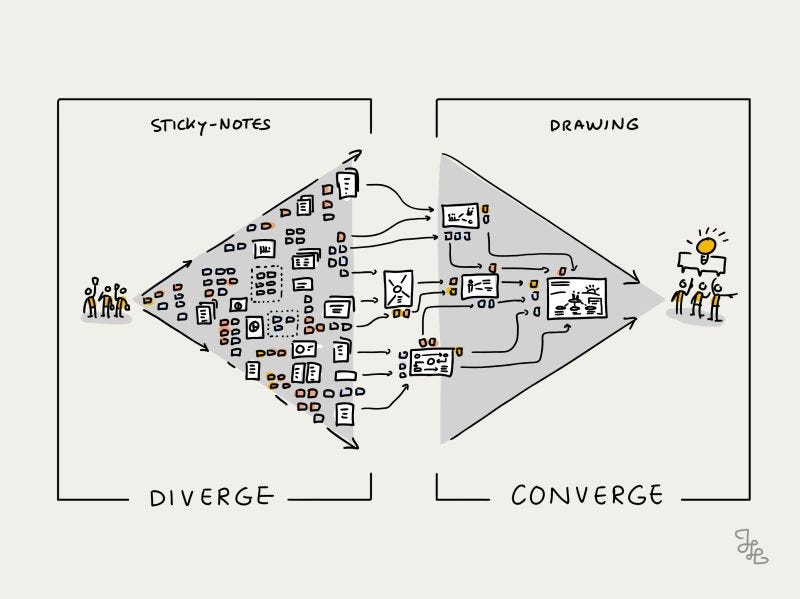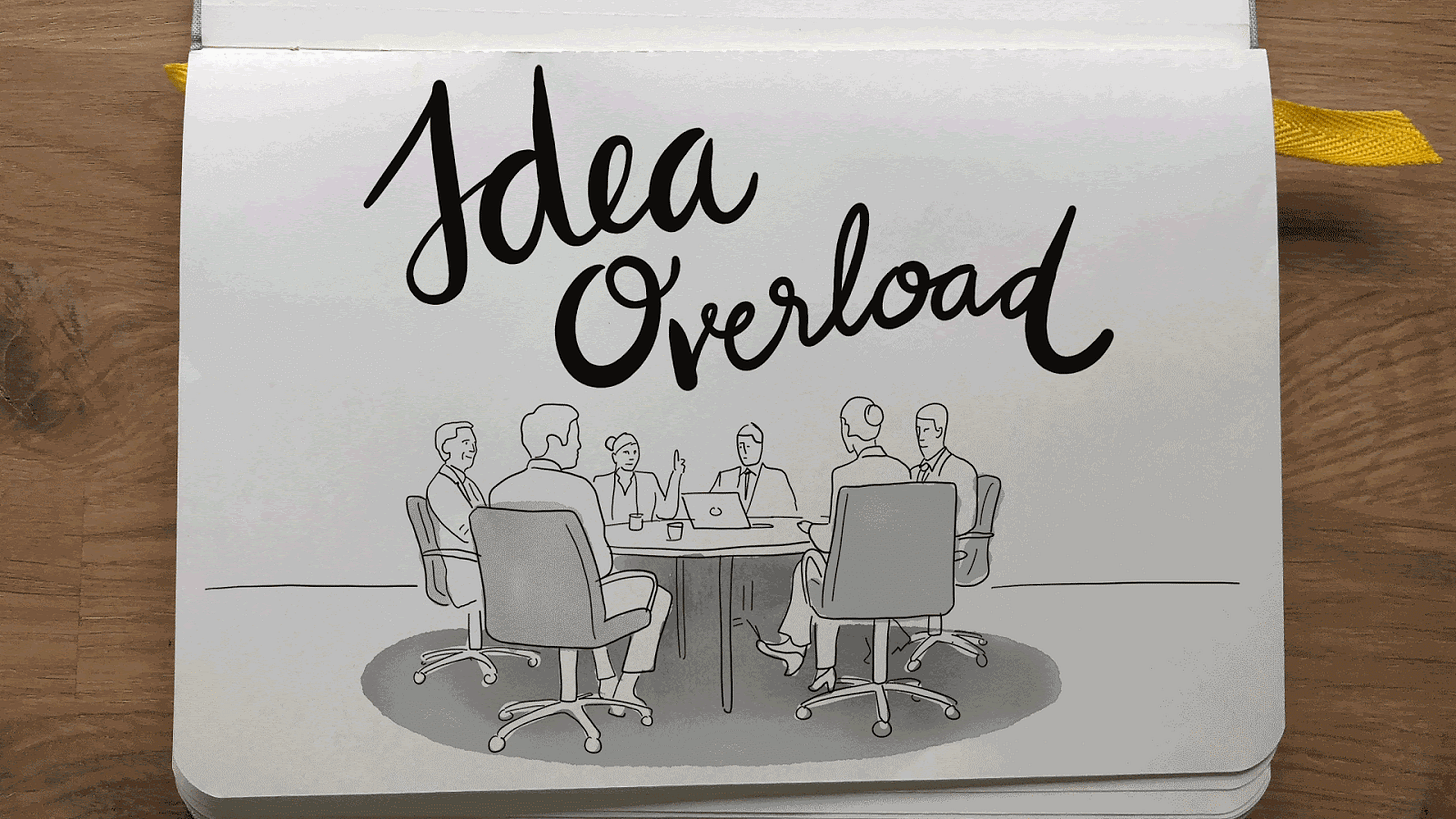AI won't help if you don't know what you're solving
We’re entering an era where ideas are easier to generate than ever before. But ideas alone don’t lead to change.
AI is excellent at expanding.
It can generate endless content, reframe ideas, and spark new directions in seconds.
That’s powerful—but also overwhelming.
More ideas demand better decisions.
When the volume of ideas increases, the need for structure rises too.
Without it, you risk getting stuck, flooded with possibilities without clarity on what matters. It’s easy to lose momentum, direction, or confidence in what to do next.
Balance is essential.
If you amplify ideation, you must also strengthen your ability to make sense of it—
to assess, align, and decide.
There are two keys to making AI useful:
🔑 Intent on the input side
What are we asking—and why?
This is classic Design Thinking: frame the problem before you explore solutions.
Your input shapes the output. Without clear intent, you get noise.
🔑 Structure on the output side
Once the ideas are generated, you need the right tools to understand, prioritize, and take action. This is where Visual Thinking comes in.
Intent on the input side:
🧭 Design Thinking helps us ask better questions
Before we generate ideas—whether through AI or a workshop—we need to frame the right challenge. Design Thinking is not just about creativity; it's about designing a process to explore the context, understand real needs, and reframe problems with clarity.
It helps teams step back, ask deeper questions, and build the foundation for focused exploration. If you don’t do that work upfront, the ideas you generate—no matter how many—won’t stick.
Intent isn’t a guess. It’s something we design.
Structure on the output side:
✏️ Visual Thinking helps turn ideas into action
Visualizing ideas forces clarity.
It helps structure complex input, spot patterns, map relationships, and surface priorities.
You move from scattered thoughts to shared understanding.
Visual Thinking supports convergence.
It helps teams align around meaning, make decisions faster, and take the next step together.
More ideas are only valuable if they lead somewhere.
And with the right structure, they do.
So before prompting AI, pause and ask:
👉 What are we trying to achieve?
👉 What will we do with the answers?
It starts with intent.
It ends with clarity, alignment, and action.
And that part?
Still very human 🙂
Where do you see our use of AI creating confusion?
Would love to hear your thoughts 👇




